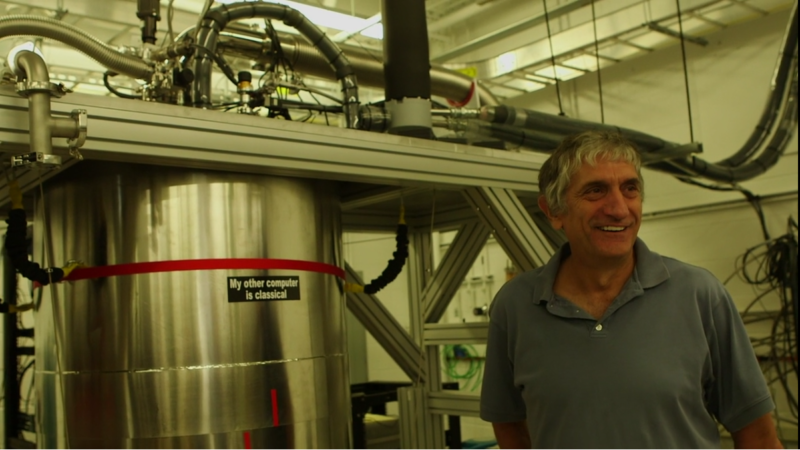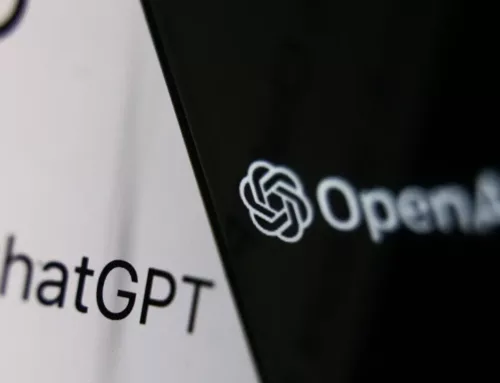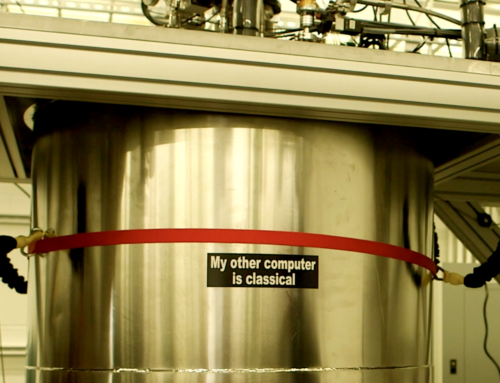Quantum physicist John Martinis with a quantum computer at Google Labs. Image Credit: Project Q
Alexander Vipond
This month MIT’s Technology Review gave notice of a Space Act Agreement between Google and NASA with potentially profound terrestrial implications: Google has enlisted the space agency’s Quantum Artificial Intelligence Laboratory to prove the quantum supremacy of its new gate-based 72 qubit Bristlecone quantum computer.
‘Quantum supremacy’, a term coined by renowned physics professor John Preskill, is the idea that quantum computers should be able to perform tasks that classical computers cannot achieve in a practical timeframe. Preskill theorised that Noisy Intermediate-Scale Quantum technologies of 50-100 qubits (aka a small quantum computer) may be able to achieve this goal. This would represent a significant milestone in the progress of the field towards scalable, fault tolerant quantum computers.
These are the sort of computers that could break the cryptographic standards of the internet, improve our understanding of the earth’s weather and provide AI agents with a computational boost, realising the potential of quantum computing.
Google have given NASA a mandate to evaluate the results of their quantum chips in “comparison to classical simulation to both support Google in validating its hardware and establish a baseline for quantum supremacy” – the expectation being that their gate-based qubit chips will be able to “perform specialised tasks beyond the power of conventional supercomputers”. To do this NASA researchers will access Google’s Bristlecone chips from the Google cloud and develop new ways to simulate and test them on their Pleiades supercomputer. The first results of this assessment are set for July next year.
This potentially puts the achievement of quantum supremacy mere months away. John Martinis, who runs the research group at Google Labs believes quantum supremacy is within the field’s grasp. In an interview for Project Q’s forthcoming documentary on the future of quantum technologies (see the teaser below), Martinis discusses why his team wants to reach quantum supremacy, what it means for the field and how they plan to do it. Essentially by demonstrating a quantum computer’s ability to compute beyond the power of a classical machine it proves that the theoretical power of quantum computers can be a reality.
While at NASA-Ames, the Project Q team also interviewed Rajiv Biswas, the Director of Exploration Technology, who noted that quantum computing has come a long way, but is still in its experimental stage. Numerous engineering challenges are posed by quantum mechanics, one of the most exotic of the sciences; but for Google and NASA the ability to solve large scale complex problems make developing the technology highly appealing.
[wpvideo ah0J7gTZ]
The test is prompted by lingering doubts about the capabilities of the Bristlecone chips. Daniel Lidar, Director of the Center for Quantum Information Science and Technology at the University of Southern California told the review that the goalposts for supremacy are not static. Advances in classical supercomputers are pushing the boundaries for quantum supremacy further away, as quantum physicists race to make improvements in their own field. Still, Lidar doesn’t rule out the possibility of a quantum supremacy demonstration in the coming months.
The Google-NASA space agreement has set a timeline for supremacy: another milestone in the race to a scalable quantum computer and one that puts other quantum powers on notice. Whether successful or not the Google-NASA space agreement will establish a new practical standard for measuring quantum supremacy which could be universally adopted. This is important as the transformation of quantum theory into real products with user friendly software will require the development of common standards that are both scientifically rigorous and commercially applicable. Stay tuned for the results – and the Project Q documentary.







Leave a Reply